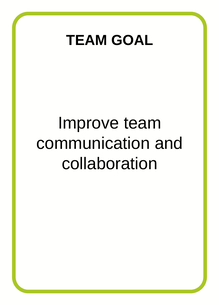
The CXO 2.0 Conference recently highlighted that collaboration is becoming a defining capability of modern leadership, not a soft skill, but a strategic one.
You can read more here: CXO 2.0 Conference Reviews How Collaboration Supports Strategic Decision-Making.
At Aligned to Achieve (A2A), we see this play out daily. Collaboration is not just the key to success; it’s the key to alignment, which turns good strategy into actual business results.
We’ve used A2A across many organisations to help teams collaborate more effectively. One example is WilldooIT, where structured collaboration led to greater cross-functional understanding and more cohesive execution. But this principle applies everywhere, when an organisation agrees on its key business goals for the next 12 months, the only way those goals are achieved is through the collaboration of the right stakeholders, at the right time, in the right way.
When Collaboration Means Different Things
Every leader has seen collaboration in name, but not in practice.
Teams meet, discuss, and plan, but people walk away with different interpretations of the goal, unclear responsibilities, or conflicting priorities.
Ideally, every organisation would complete a RACI map (Responsible, Accountable, Consulted, Informed) for its key goals, making expectations and handoffs explicit. The operative word, of course, is ideally.
In reality, collaboration often falters because alignment is assumed, not proven. A2A changes that.
How A2A Makes Collaboration Visible
Using A2A to strategise around a specific business goal creates what we call cross-functional alignment, where multiple business units or teams understand not only the goal but also how their work connects to achieving it.
Cross-functional alignment means that Marketing, Sales, Operations, Finance, and People functions each see their part in the bigger picture, and understand how to collaborate to reach shared outcomes.
When organisations use A2A in workshops or strategic planning sessions, the outcome is tangible:
- Agreement on the most important goals.
- Identification of blockers and enablers.
- Shared commitment to actions and accountability.
The process builds collaboration because everyone shapes the plan, and the data generated from A2A becomes a blueprint for optimal alignment and teamwork.
Collaboration That Drives Performance
The extent of collaboration and alignment directly impacts an organisation’s bottom line.
Misaligned teams move more slowly, duplicate effort, and dilute strategic focus.
Aligned teams collaborate intentionally, turning collective energy into measurable outcomes.
Through a series of A2A workshops and reviews of the resulting reports, leadership teams gain more than a plan; they gain visibility into how the organisation collaborates, where alignment is strong, and where it needs reinforcement.
It’s a simple truth with powerful implications:
When collaboration is structured and alignment is visible, performance improves every time.
What Next?
The CXO 2.0 article got it right: Collaboration supports better decision-making. But the next evolution is here: alignment through collaboration.
If you want to measure the alignment of your various departments or businesses, we would be happy to show you in 10 minutes how A2A can let your teams participate and, importantly, contextualise how they work together and what they do to achieve desired business outcomes.